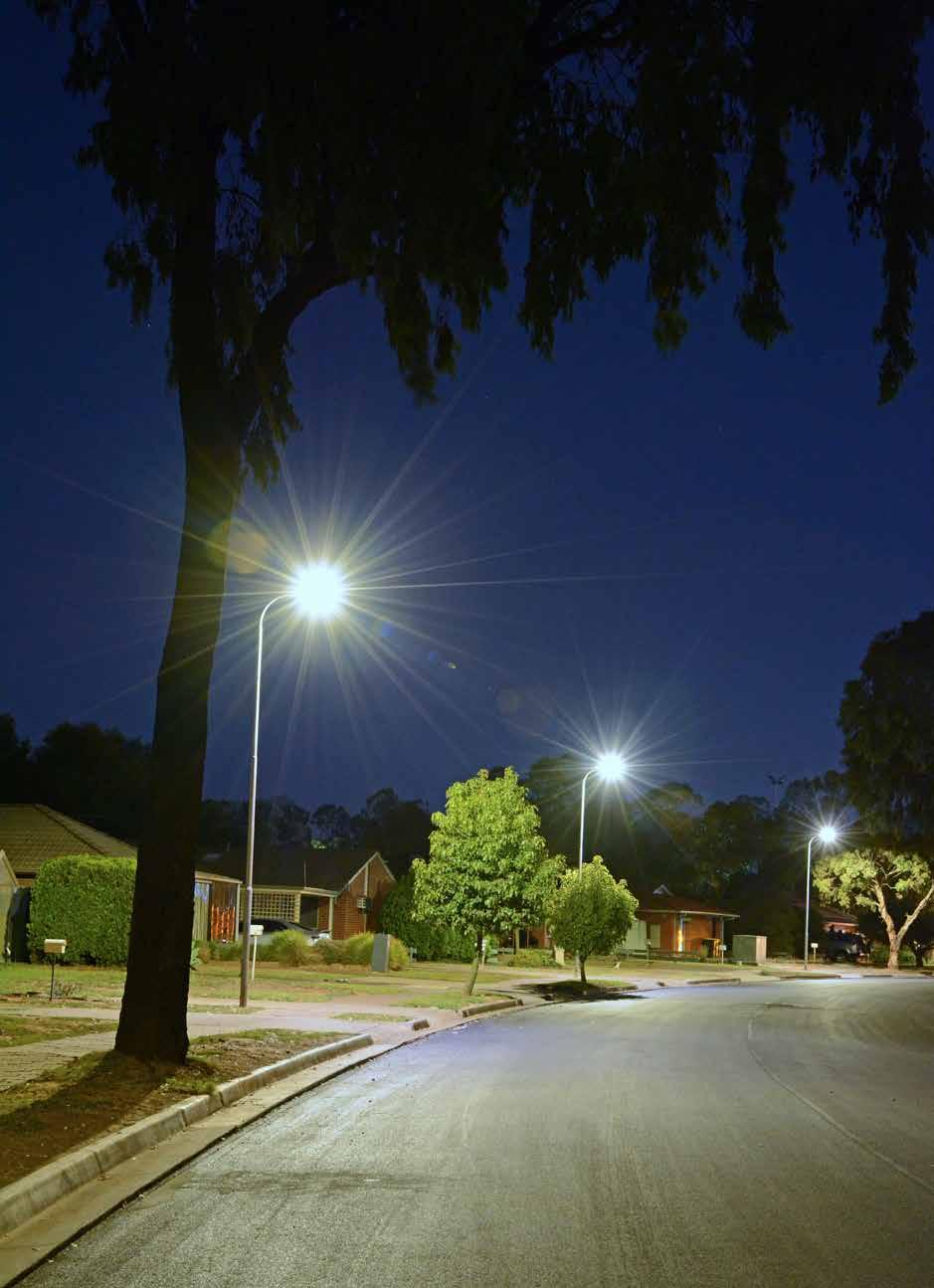
3 minute read
The big switch
WORDS Nicole Alberton
We’re switching about 10,000 street lights in the City of Salisbury to new LED lighting.
Advertisement
The ‘big switch’ – as we’re calling it, will cut energy and maintenance costs by 60 per cent and improve visibility on roads and footpaths. Cutting down on emissions from street lights is a key strategy under the Sustainable City direction in our City Plan 2035.
SA Power Networks own about 90 per cent of the street lights in our City. Apart from pockets such as Mawson Lakes and other housing developments established from 2000 onwards, which come under the care of Council.
Council has purchased new lights for SA Power Network’s poles to assist in a speedier realisation of energy and emission savings. The big switch is being delivered as a rolling program on identified streets until May 2022 and any old technology street lights that are reported broken will now be replaced with a new LED light.
The white light generated from LEDs will differ from existing street lights which can appear more yellow and amber. Although the street lights may appear to be brighter (because they are newly installed) they will be more efficient in spreading light more evenly along and across footpaths and roads. Visibility along the street will also be improved and look more natural. emissions by local government in Australia. But this program will reduce that carbon emission by 700 tonnes of greenhouse gases a year – a huge reduction in emissions.
And the City of Salisbury is ‘lighting the way’ as it were, by breaking from tradition and using a warmer white light (3,000 kelvin) over the more commonly used cool white light (4,000 kelvin) on residential streets.
A cool white light emits a greater amount of blue light, similar to the light that gets
emitted from your smart phone or laptop screen, which has been suggested to keep people awake for longer.
Based on factors such as traffic flow and road use, the most appropriate light for the location is chosen by our expert team.
For example, a major road with high traffic may prefer a cooler white light for driver alertness and a better luminosity and spread, rather than a residential street which will likely need a warmer white light for less intrusive and more natural lighting.
We get hundreds of calls and enquiries each year about street lights and most of these are to report a faulty one. But it’s confusing to know if a street light is owned by Council or SA Power Networks – and sometimes it’s difficult for us to determine exactly which light is the issue – especially during the day when our crews are out working.
You can report any faulty street light using your smartphone or other smart device via the SA Power Network website, using the Report an issue with a street light interactive map service.
Just type in your address, click on the faulty street light shown on the map, and provide your details into the fault report and submit. A fault report will automatically be sent to Council or SA Power Networks.
During the roll-out Council will be considering how best to respond to community requests for lighting as well as tackling lighting needs in priority areas around the City. So, if you see a faulty light please report it in the first instance via SA Power Networks, so they can be fixed and replaced with a new LED light quickly.
Street lighting is the largest source of greenhouse gas emissions by local government in Australia: this program will reduce carbon emission by 700 tonnes each year











